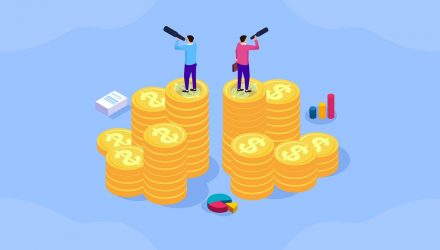U.S. companies remain dedicated buyers of their own shares, a theme that while controversial in some political circles, is boosting buyback exchange traded funds (ETFs), such as the SPDR S&P 500 Buyback ETF (NYSEArca: SPYB).
SPYB focuses on S&P 500 companies with the highest buyback ratio in the past 12 months. The fund tracks the S&P 500 Buyback Index and is home to 100 stocks. That index “screens securities based on the cash value of the actual buyback, not the reduction in number of shares outstanding, in order to more fully capture the shareholder value created by increasing share repurchases,” according to State Street.
While dividends are often thought as useful long-term rewards for shareholders (they are), buybacks also reward investors over the long haul.
“Since its inception in January 1994, the S&P 500 Buyback Index returned 13.29% annually, compared with gains of 10.31% and 8.96% from the S&P 500 High Dividend Index and S&P 500, respectively,” said S&P Dow Jones Indices. “One of the key reasons for the outperformance is that buying shares back decreases the company’s shares outstanding, which helps improve earnings-per-share (EPS) and eventually propels stock prices higher.”
Banking On Buybacks
Some sectors repurchase shares at more rapid rates than other groups, so buyback ETFs like SPYB often have sector weights that differ significantly from standard broad market ETFs. SPYB devotes about 61% of its combined weight to the financial services, technology and consumer discretionary sectors.
Alternatives to SPYB include the Invesco Buyback Achievers ETF (NASSDAQ: PKW) and the iShares U.S. Dividend and Buyback ETF (Cboe: DIVB). PKW includes a broader selection of U.S. companies that have effected a net reduction in shares outstanding by 5% or more in the trailing 12 months.
Related: A Venerable Dividend ETF Play for 2019
DIVB is comprised of U.S. stocks with a history of dividend payments and or share buybacks where holdings include those with the largest dividend and buyback programs in the market measured by dollar value.
What is clear is that U.S. companies are boosting their commitment to share repurchase programs.
“Two decades ago, fewer than half of S&P 500 companies purchased shares back. The participation rate stood at around 80% as of Dec. 31, 2018,” according to S&P Dow Jones.
For more on core investing strategies, visit ETFtrends.com.
The opinions and forecasts expressed herein are solely those of Tom Lydon, and may not actually come to pass. Information on this site should not be used or construed as an offer to sell, a solicitation of an offer to buy, or a recommendation for any product.


